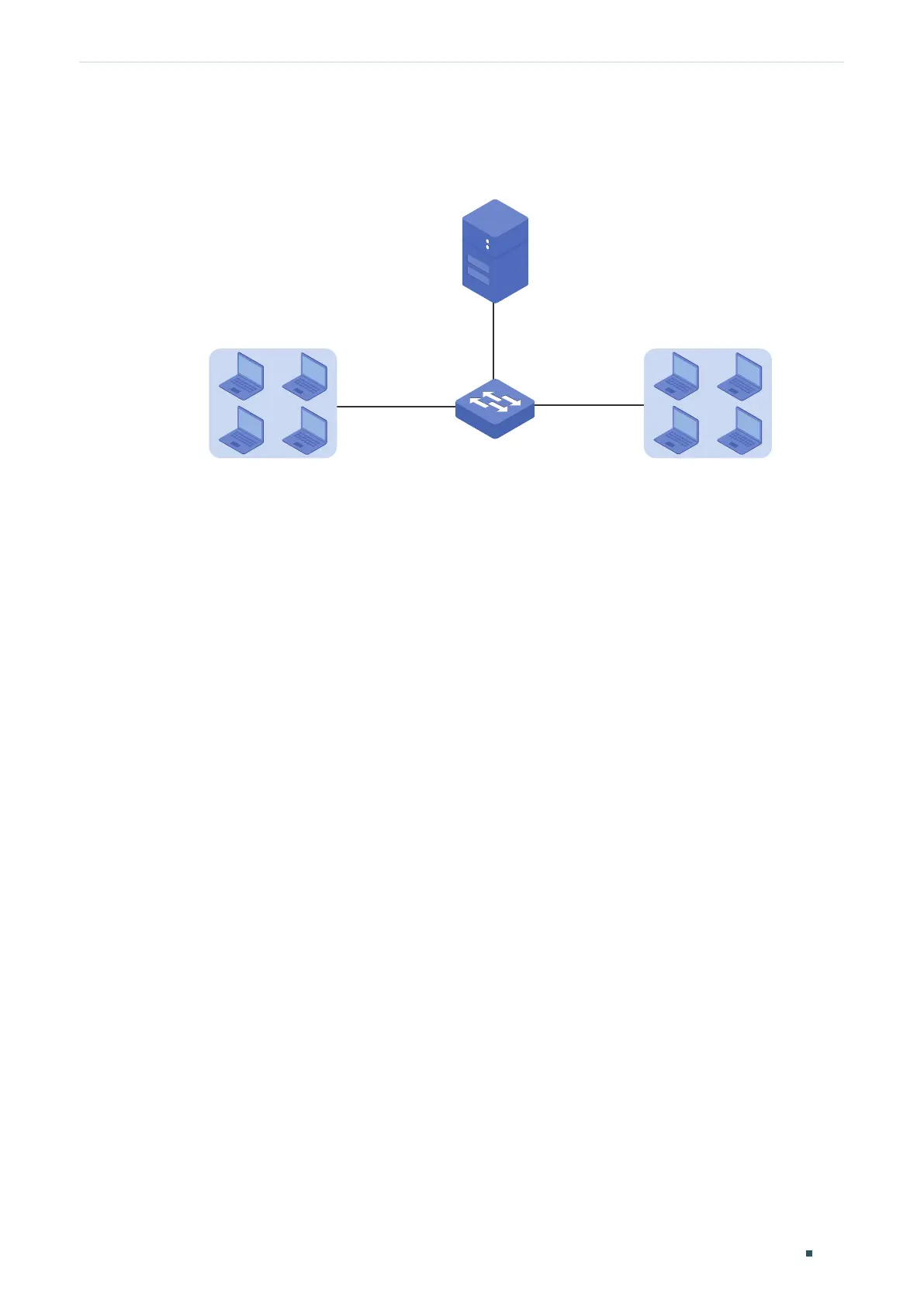Configuring DHCP Service Configuration Examples
User Guide
573
the switch. The Marketing department is connected to port 1/0/1 of the relay agent, and
the R&D department is connected to port 1/0/2 of the relay agent.
Figure 5-5 Network Topology for DHCP Interface Relay
DHCP Server
192.168.0.59/24
VLAN 20
192.168.3.1/24
VLAN 10
192.168.2.1/24
Marketing Dept.
192.168.2.0/24
R&D Dept.
192.168.3.0/24
Switch
DHCP Relay Agent
Routed Port (Gi1/0/5)
192.168.0.1
Gi1/0/1
Gi1/0/2
5.2.2 Configuration Scheme
In the given situation, the DHCP server and the computers are isolated in different
network segments, so the DHCP requests from the clients cannot be directly forwarded
to the DHCP server. To assign IP addresses in two different subnets to two departments
respectively, we recommend you to configure DHCP Interface Relay to satisfy the
requirement.
The overview of the configurations are as follows:
1) Before configuring DHCP Interface Relay, create two DHCP IP pools on the DHCP
server for the two departments, respectively. Then create static routes or enable
dynamic routing protocol like RIP on the DHCP server to make sure the DHCP server
can reach the clients in the two VLANs.
2) Configure 802.1Q VLAN on the DHCP relay agent. Add all computers in the marketing
department to VLAN 10, and add all computers in the R&D department to VLAN 20.
3) Create VLAN interfaces for VLAN 10 and VLAN 20 on the DHCP relay agent.
4) Configure DHCP Interface Relay on the DHCP relay agent. Enable DHCP Relay globally,
and specify the DHCP server address for each VLAN.
In this example, the DHCP server is demonstrated with T2600G-52TS and the DHCP relay
agent is demonstrated with T2600G-28TS. This section provides configuration procedures
in two ways: using the GUI and using the CLI.

